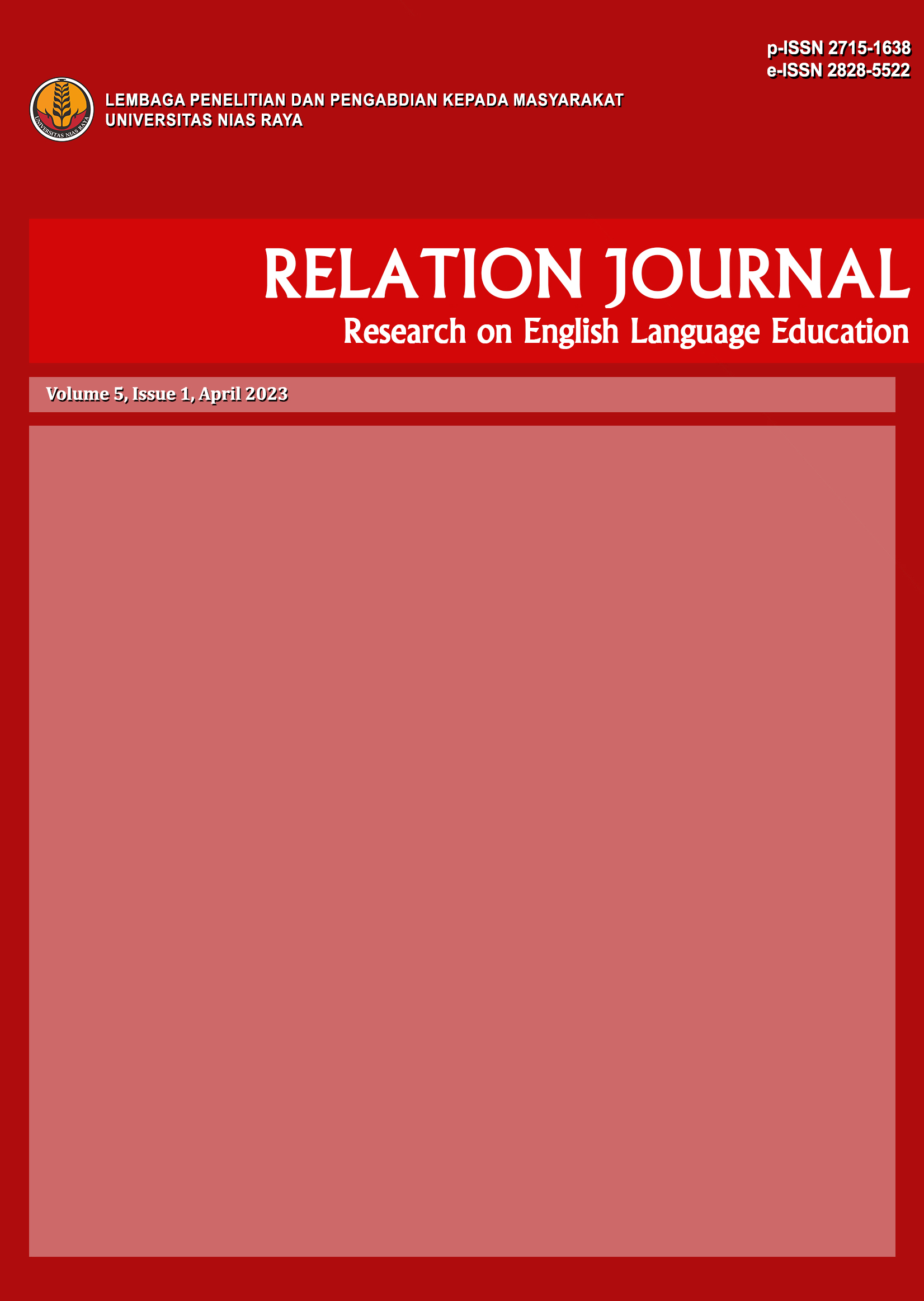CODE SWITCHING USED BY INTERNATIONAL TOURIST TO LOCAL PEOPLE IN SORAKE BEACH
Guru Bahasa Inggris di SMP Negeri 1 Luahagundre Maniamolo
Abstract
Code switching as one of the language events that often occurs in social interactions between speakers and interlocutors due to the ability of language users as bilinguals or multilingual. This research aimed to describe and to explain the types and the reasons of code switching occurrence between local people in Botohili Sorake Village and international tourists in Sorake Beach. The participants of this research were the international tourists (foreign tourist) in Sorake Beach. This research was conducted by utilized qualitative method with descriptive approach. The instruments applied in collecting data were the observation and interview. The data acquired were analyzed by using Miles and Huberman’s mode: 1) data condensation, 2) data displayed, and 3) conclusion drawing/verification. The results of this study indicate that the types of code switching used by international tourists (foreign tourist) in their interaction to local people in Sorake Beach, Botohili Sorake Village, Luahagundre District were: a) Inter-sentential Code Switching, b) Intra-sentential Code Switching. Thus, based on the results found, it can be concluded that the code switching in an interaction is very helpful for language users, both speakers and interlocutors in understanding and conveying messages or information. This study also reveals several reasons for the use of code switching in an interaction, none other than to avoid misunderstanding the meaning of language between the speakers and interlocutors and as an advantage, especially for bilingual. Briefly, it can be stated that code switching has an important role in a communication. However, although the presence and role of code switching is quite important in language, the researcher also suggests to language users to increase the ability to use language as communication tool, both in their own language and in other language.
References
Cenoz, J. 2009. Towards Multilingual Education: Basque Educational Research From An International Perspective. Bristol: Multilingual Matters.
Creswell, J. W. 2014. Research Design: Qualitative, Quantitative, and Mixed Methods Approaches. (4th ed). London:
Sage Publication.
Holmes. 2013. An Introduction to Sociolinguistics. (4th ed). London and New York: Routledge.
McKay, S. L and Hornberger, N. H. 2009. Sociolinguistic and Language Teaching.
USA. New York: Cambridge
University Press.
Miles, M.B et al. 2014. Qualitative Data Analysis: A Methods Sourcebook. (3rded). USA: Arizona State University.
Miriam, M. (2006). Introducing Sociolinguistics. Oxon: Routledge.
Soerjasih, I et al. 2017. Modul Pengembangan Keprofesian Berkelanjutan. Mata Pelajaran Antropologi SMA. Kelompok Kompetensi I. Profesiona l: Pengembangan Perangkat Pembelajaran. (Edisi Revisi). Pusat Pengembangan dan Pemberdayaan Pendidik dan Tenaga Kependidikan Pendidikan Kewarganegaraan dan Ilmu Pengetahuan Sosial, Direktorat Jendral Guru dan Tenaga Kependidikan Kementrian Pendidikan dan Kebudayaan.
You are free to:
- Share — copy and redistribute the material in any medium or format for any purpose, even commercially.
- Adapt — remix, transform, and build upon the material for any purpose, even commercially.
- The licensor cannot revoke these freedoms as long as you follow the license terms.
Under the following terms:
- Attribution - You must give appropriate credit , provide a link to the license, and indicate if changes were made . You may do so in any reasonable manner, but not in any way that suggests the licensor endorses you or your use.
- No additional restrictions - You may not apply legal terms or technological measures that legally restrict others from doing anything the license permits.
Notices:
- You do not have to comply with the license for elements of the material in the public domain or where your use is permitted by an applicable exception or limitation.
- No warranties are given. The license may not give you all of the permissions necessary for your intended use. For example, other rights such as publicity, privacy, or moral rights may limit how you use the material.









